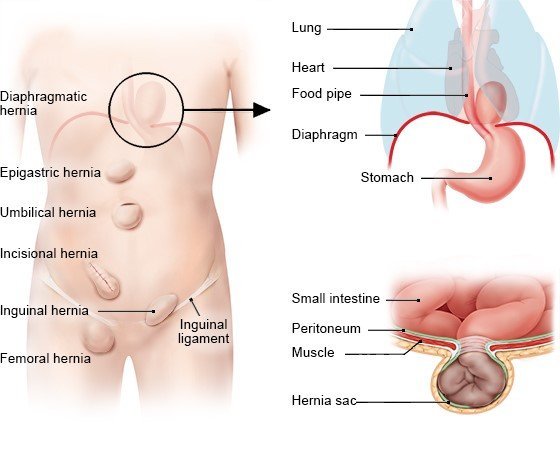What is a Sports Hernia?
A sports hernia (also known as athletic pubalgia) is a soft tissue injury that occurs in the groin or lower abdominal area. Unlike traditional hernias, a sports hernia does not cause a visible bulge. It results from a strain or tear in the muscles, tendons, or ligaments in the lower abdomen or groin, often due to repetitive, high-intensity physical activities. This condition is common among athletes involved in sports that require sudden twisting, turning, or rapid directional changes, such as soccer, hockey, tennis, and football.
Symptoms of a Sports Hernia
- Chronic pain or discomfort in the lower abdomen or groin area
- Sharp or stabbing pain during physical activity, especially when twisting or turning
- Pain that improves with rest but returns when activity resumes
- Tenderness in the groin region when touched
- Weakness or stiffness in the groin or lower abdominal muscles
- In some cases, pain may radiate to the inner thigh or testicles (in men)
What Causes a Sports Hernia?
- A sports hernia is usually caused by repetitive stress or sudden movements that strain the abdominal and groin muscles. Risk factors include:
- High-intensity sports involving sudden directional changes (e.g., soccer, hockey, football)
- Poor core strength or muscle imbalances
- Tight hip flexors or weak abdominal muscles
- Inadequate warm-up before physical activity
- Overtraining without proper recovery periods
- Previous groin or abdominal injuries
How is a Sports Hernia Diagnosed?
- Diagnosing a sports hernia can be challenging since it does not cause a visible bulge like traditional hernias. A comprehensive physical examination and imaging tests are usually needed:
- Physical Examination: Your doctor will assess tenderness in the groin and check for pain during movements like sit-ups, leg raises, or twisting motions.
- MRI (Magnetic Resonance Imaging): The most effective imaging method for detecting soft tissue injuries associated with sports hernias.
- Ultrasound or CT Scan: May be used to rule out other potential causes of groin pain.

Treatment Options for Sports Hernia
- Initial treatment for a sports hernia often begins with conservative methods, but surgery may be required if symptoms persist.
1. Non-Surgical Treatments:- Rest and Activity Modification: Temporarily stopping the activity that causes pain.
- Physical Therapy: Strengthening the core and hip muscles to improve stability and reduce strain on the groin.
- Anti-inflammatory Medications: To reduce pain and swelling.
- Ice Therapy: Applying ice to the affected area to manage inflammation.
- Corticosteroid Injections: In some cases, injections may help reduce inflammation and pain.
2. Surgical Treatment:If non-surgical treatments fail after 6-12 weeks, surgery may be recommended. Surgery involves repairing the torn or weakened soft tissue in the lower abdomen or groin.
- Open Surgery: A traditional approach where an incision is made to repair the damaged tissue.
- Laparoscopic (Minimally Invasive) Surgery: Small incisions are used along with a camera to guide the repair, resulting in quicker recovery and less post-operative pain.
Risks and Complications of Sports Hernia Surgery
- Although sports hernia surgery is generally safe, some potential risks include:
- Infection
- Bleeding
- Nerve damage or chronic groin pain
- Scar tissue formation
- Recurrence of symptoms if rehabilitation is not properly followed
Let's help you!

Why Choose ELITE HERNIA Clinic?
- Expert Surgeons: Our team has extensive experience in diagnosing and treating sports-related hernias.
- Comprehensive Care: From accurate diagnosis to post-operative rehabilitation, we offer complete care tailored to each patient.
- Advanced Techniques: We use minimally invasive surgical methods to ensure faster recovery and better outcomes.
- Athlete-Focused Rehabilitation: Our personalized physical therapy programs are designed to get you back in the game as quickly and safely as possible.
Frequently Asked Questions (FAQs)
No, a sports hernia involves soft tissue injuries in the groin or lower abdominal area without a visible bulge, unlike traditional hernias that involve a protrusion of tissue through the abdominal wall.
While some athletes may play through mild symptoms, continuing to strain the area without proper treatment can worsen the injury and delay recovery.
Most athletes can return to light activities within 2-4 weeks and resume full sports participation within 6-12 weeks, depending on the extent of the injury and adherence to rehab protocols.
Without proper treatment, the condition can lead to chronic pain and further muscle weakness, eventually preventing athletic activity altogether.






